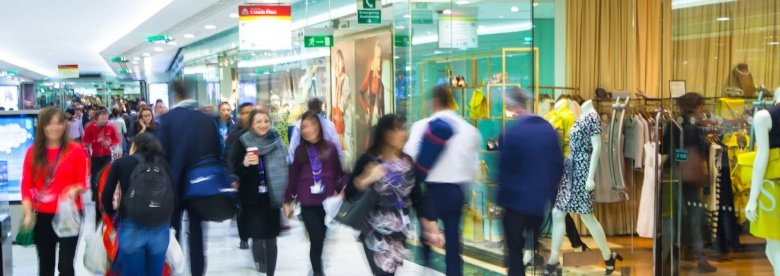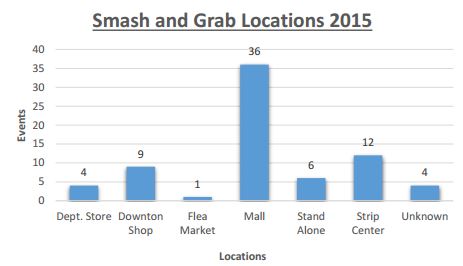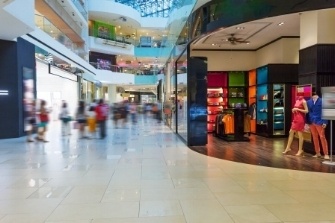
The locations of jewelry businesses can vary from a designer’s home, to Main Street, to an office on 47th Street in New York.
To the general public, however, jewelry businesses are often synonymous with one type of location in particular: shopping malls. The main square of a shopping center usually has at least one corner devoted to jewelry and, in larger malls, stores can be found on multiple levels.
While larger chains usually occupy this real estate because they can better afford the high cost of rent, many independent jewelers locate their businesses in strip malls to lessen the burden of owning their own property.
Intuition would tell you that these locations are less prone to crime than a home-based business, standalone property, or office in a jewelry or diamond district. Unfortunately, when it comes to jewelry store security, that’s far from the truth.
Historical information from the Jewelers Security Alliance shows that mall locations are the leading target for a variety of crimes — especially smash-and-grab robberies.

But why? It seems counterintuitive.
Would a criminal seriously target and attempt a crime in such a high-traffic area?
Unfortunately, they have been, currently are, and will most likely continue finding malls as attractive targets for these reasons:
Showcase displays are front and centerThe open concept of jewelry stores in malls often leaves no other physical barriers to slow down an attack on showcases. This makes the construction quality of the showcases all the more important. |
 |
More difficult to recognize casingIn order to attract customers, high profile items are routinely placed in the very showcases that are front and center. This also allows criminals to case from a distance or blend in as shoppers walking from store to store. |
 |
Guards may not be allowedThe ideal security guard for jewelers would be an armed, active, and uniformed off-duty police officer. Property-management groups and local law enforcement may not allow malls to be staffed by such guards, but anything less is not as imposing to criminals. |
 |
Plenty of escape optionsFoot traffic is high in malls and vehicle traffic is equally heavy surrounding the location. This allows criminals to mix back into flow and go relatively unnoticed. It’s important to remember to never pursue criminals, even if you can identify them in crowds of people. |
 |
Employee turnoverLike any business, it takes a lot of resources to properly train employees. While nothing is currently available to definitively say that jewelers in malls are at a higher risk of employee turnover, criminals who extensively case these locations may notice when turnover happens. Compounded with the weak points in physical security previously mentioned, this lapse in procedural security could be enough to convince them to strike. |
 |
If you’re located in a mall, there are not as many ways to improve your physical security as there are to improve your procedural measures.
That’s why the first step you should take is to enroll your new staff in JM University and have them complete the Selling with Security course — a top-to-bottom approach for associates to prevent crime on the front lines.